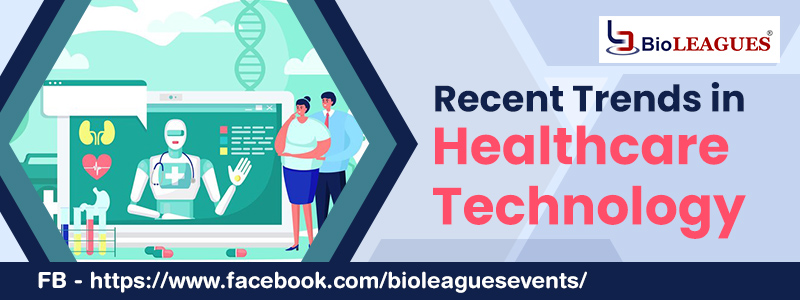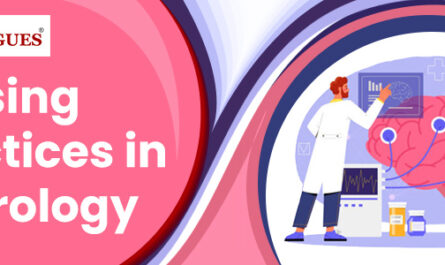COVID-19 has had a major influence on the global health system and the pace of its digitalization. The need to effectively address new challenges has spurred the adoption of healthcare software solutions around the world. Patient expectations have also changed a lot. For healthcare providers and other related institutions, these factors have turned into a real game-changer. Take part in one or more International Conferences in 2025 to learn about these solutions in detail.
Today we can see that they tend to consolidate, so the big guys are getting even bigger. But no organization will be able to maintain a leadership position without adopting the latest health technologies. If a healthcare provider wants to guarantee the quality of patient care that meets current market demands, all they need to do is reinvent their business model and prioritize innovation. There is no other way.
- Block chain
- Block chain is a trend that is expected to dramatically improve the healthcare industry in 2020 and the years to come (register for this Upcoming Healthcare Conference to learn more about this trend).
- Digital registries can enable healthcare providers to distribute transaction records to patients securely and will dramatically improve data security.
- Blockchain’s peer-to-peer system allows a large number of users to securely access a common ledger. Interoperability is one of the biggest advantages of blockchain in healthcare technology. Through key public-private methods, there is greater integrity in the use of healthcare data.
- An instance of this would be that a specialist offering a consultation can obtain quick access to information through a secure system that all parties use.
- The adaptability of anonymity can be managed so that patients can choose to provide data for research reasons.
- Eventually, this would comply with HIPAA and GDPR regulations.
- Data integrity, safety, convenience, and mobility are all in-demand characteristics during the COVID-19 public health crisis of 2020.
- Blockchain is a critical technology (as these forthcoming Healthcare Conferences in 2025 will emphasize) that can assist in delivering these features to help healthcare providers to communicate effectively with COVID-19 patients and remotely diagnose them as well.
- Blockchain enhances transparency and integrity through full visibility through the digital ledger.
- If there are any counterfeit or supply chain issues, all transactions are recorded through the blockchain system.
- Partake in these upcoming Medical Conferences 2025 to find out how this process works exactly.
- Since this is so easily consolidated, it also saves the costs that would have been required to manually track these transactions.
- It is still to be witnessed how blockchain will be implemented across the industry.
- In 2017, IBM launched a research initiative with the FDA to use Watson Health to test how a blockchain system could help manage clinical study information, patient records, and portable patient data.
- A few years later, IBM Watson Health presented the Digital Health Pass, which at its core is a blockchain certification solution that makes it possible for companies to privately check the health status of their employees.
- With blockchain, there is absolutely no necessity for a basis of trust between two parties to be established.
- As Healthcare Technology continues advancing, mobility, safety, and convenience are all desired objectives that blockchain can help achieve alongside other trends such as IoMT and cloud computing.
- VR & AR
- VR and AR technologies are playing their role in healthcare technology trends (participating in this Healthcare Event will help you realize exactly how).
- The most obvious example is the training of surgeons. VR training allows healthcare professionals to practice and improve their skills without having to be in a hospital.
- During the pandemic, Virti (a UK-based company) collaborated with the NHS to train frontline workers.
- There was a critical need for more people to work in intensive care units, and they needed to be quickly trained to use PPE properly, navigate an intensive care unit, use ventilators, and even interact with patients and their families.
- VR technology is also a statistically proven method for training healthcare workers.
- It appears to be able to reduce “skill fading” by 52% and improve retention by up to 75%, compared to 10% for traditional methods.
- Virtual reality applications can also be used for patient care.
- For instance, exercise rehabilitation can use virtual reality software and hardware to speed recovery. Register for this Nursing Conference 2025 to find out more about this application.
- Virtual reality and augmented reality, with their multiple applications, are rapidly gaining momentum. It makes absolute sense business-wise for a precision industry such as the healthcare industry to invest in it to realize greater efficiency.
- Big Data & Predictive Analytics
- Big data in healthcare is probably the most important medical macro-technological trend in 2025.
- Rapid scanning helps capture useful clinical data, as this upcoming International Nursing Conference will demonstrate exactly how.
- Wearable technology has developed sufficiently to record continuous data at a moderate cost.
- Finally, interoperable systems and new regulations have made it possible to share this data for the benefit of predictive analysis.
- Use cases during the pandemic have shown how important big data can be in healthcare.
- The most obvious use was to predict peaks in cases. Additionally, analysts have used contact tracing technology to identify and contain outbreaks.
- Big data has also helped develop immunization strategies, identifying high-risk groups based on various factors.
- In short, there is no way that healthcare is moving away from the use of big data.
- This also extends to its commercial side, and to know more, register for these forthcoming Nursing Dubai Conferences.
- Business intelligence and analytics can bring payoffs that are worth any investment.
- Patients now have the right to share data, and healthcare providers can leverage this to gain insight from clinical, financial, and operational data, making patient care much more efficient.
- Customized Mobile Apps
- As of today, there are close to six billion smartphone users worldwide.
- Each of these users spent an average of four hours using their device each day, with most of that time spent on an app.
- This is despite the fact that desktop Internet usage continues to decline every year.
- At this point, building a mobile app, be it iOS or Android, is a must for business success, and partaking in these Medical Conferences in 2025 will help you realize exactly why.
- Consumers are used to the fluid journey offered by a mobile application.
- The healthcare sector is no exception.
- In fact, it makes sense to use a popular channel like this to effectively interact with people in an industry that relies so heavily on effective communication. With integrated EHR / EMR systems, a personalized mobile application could become the most important point of contact between healthcare providers and patients.
- Data that a healthcare provider can access, with permission, from a mobile app can be used in several ways to improve patient care.
- In addition, mobile applications can be used to provide services such as teleconsultations and electronic prescriptions.
- To know more about these applications, register and participate in these Upcoming Nursing Conferences.
- Nano medicine
- Although Nano medicine might still sound like a figment of science fiction, it is slowly entering our daily lives.
- To learn about the areas that nanomedicine has already penetrated, register and participate in this Upcoming Medical Conference.
- The nanomedicine industry presents enormous potential and welcomes early investors.
- Nanomedicine involves the use of materials and objects at the nanoscale (microscopically tiny), such as –
- biocompatible nanoparticles,
- nanoelectronic devices, or
- even nanobots,
for specific medical purposes and manipulations such as diagnosing or treating living organisms.
- For instance, it can be utilized as a potential hunter of cancer cells or viruses, which requires the injection of a group of nanobots into the blood vessels of a human.
- This technology is expected to successfully fight many genetic, oncological or autoimmune diseases at the cellular level, including –
- tumors,
- arthritis, and
- others (or even become the go-to solution for them).
- Save your seat at this highly anticipated Medical Conference 2025 to learn more about the applications of nanomedicine in detail.
- This technology is expected to successfully fight many genetic, oncological or autoimmune diseases at the cellular level, including –
- Internet of Medical Things (IoMT)
- Although IoMT is nothing new in 2025, this sector will experience exponential growth in the years to come.
- There are plenty of digital health trends involved in this industry, and each one offers great uses for healthcare professionals, with billions of dollars being saved.
- There are a number of companies offering IoMT solutions that provide assistance in devising and tuning an IoMT system using advanced custom software.
- Wearables and mobile applications in medical practice Remote health and wellness monitoring apps are on the rise and will continue to thrive in 2025. On visiting the Google Play or iTunes catalogs, one will find a few professional (and myriad semi-professional) healthcare well-being-based mobile apps.Some of these mobile apps can sync with portable devices, such as heart rate monitors or fitness trackers, to use data collected through sensors placed on the body to report or analyze health metrics, such as – heart rate, heart rate, blood pressure, body temperature, and other measurements.One recent innovation involves a tablet app that provides physicians with instant access to critical ECG data and reports that are generated by devices with superior arrhythmia detection.
- Autonomous smart devices in healthcare Autonomous nursing robots or autonomous smart devices can greatly assist medical staff by reducing their tasks related to sanitation or supply management. Different types of robots can operate in a variety of hospital locations and stations, which protects human employees from exposure to infection risks or burnout due to the immense pressure placed on many US hospitals inundated by them. Book your place at this International Medical Conference in 2025 to witness a demonstration of how these robots are operated. For example, nursing robots were used by an Italian hospital during a severe outbreak of COVID-19. These smart assistants have been used for remote monitoring of patients’ blood pressure and oxygen saturation levels, as these are parameters of critical importance to their current state of health. These levels can drop within minutes, with the patient needing immediate support. In this way, the necessity for nurses to visit patients personally has been greatly reduced.Thus, we can clearly state that IoMT is one of the major trends in medical technology in 2025.
- mHealth
- It is widely believed that by 2030, mHealth will become a standard treatment protocol for the majority of diseases and conditions.
- This will make healthcare more personalized and lead to lower costs, superior quality of care, and even better patient engagement.
- The only difference between telehealth and mhealth is that the mhealth pertains to the concept of mobile self-care, while telemedicine refers to all cases of access using modern technology.
- MHealth’s market share in the North American region was valued at $ 11.364 million in 2019 and is anticipated to develop at a cumulative annual growth rate of close to 40% during the period 2020-2026.
- ClassPass, the app that lets people book unlimited fitness and wellness sessions at multiple gyms and studios, is an instance of an mHealth company doing very well for itself.
Every healthcare technology that has been highlighted in this article saves thousands of lives. Once the tech ecosystem matures, the number of applications and the resulting benefits will change the way humans live. For healthcare organizations, the coming years will be dedicated to their digital transformation and full adoption of the latest available technologies. Hospitals and healthcare service providers will increasingly look to create transformative products and services for their patients. This Upcoming Medical Conference in 2025 will go in-depth into how this will take place.




